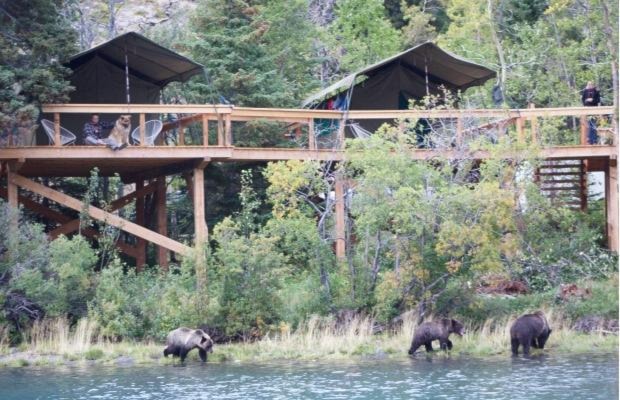April 1 marked the opening of the controversial spring bear hunt and despite the fierce and ongoing debate on the scientific, moral, and ethical issues surrounding the grizzly bear hunt the BC government issued the highest number of tags in years. An estimated 1,800 tags will be issued, up from about 1,700 last year.
The hunt will run into the end of May and includes areas in the Chilcotin that have been closed for 13 years.
Kliniklini-Homathko Management Units 5-05 and 5-06 will issue three grizzly bear tags this year. The area was closed in 2000 due to a combination of hunter harvest and conflict kills on the northern and eastern fringes of the area where ranching is prevalent.
“The government puts new population estimates at approximately184 bears, and indicates a harvest of five bears per year would be sustainable,” said Greig Bethel Public Affairs Officer with the Ministry of Forests, Lands and Natural Resource Operations. “This can be altered if hunting mortality or other mortality through conflict rail/road kill etc. exceeds estimates.”
The area is also an increasing popular place to view bears, with four operators offering grizzly bear viewing tours.
Karen McLean of Tsylos Park Lodge and Adventures has been offering grizzly bear viewing tours since the 1990s. She is concerned about the impact of the spring hunt on both her business and the local grizzly bear populations.
“I think it’s unethical that they are opening areas that have been closed for so long,” she said. “The bears need these protected areas, because the truth is that there is no way to know for sure how healthy the population is.”
Bethel said that the government remains confident that their decision is based on the ‘best available science.’ “The areas where hunting is being resumed have stable to increasing grizzly populations that can sustain a conservative hunt,” he said. “If hunting or other grizzly mortality exceeds mortality estimates, the hunt can be reduced or even completely closed, as has been done previously.”
The government has also re-opened the Kootenay region to a spring hunt. These units were closed in 2011 as a result of female grizzly bear kills exceeding a government-set threshold over a five-year period.
“I think we have the best idea (of the population) of any of the jurisdictions that hunt bears right now,” said Garth Mowat, a provincial government grizzly bear biologist in the Kootenay region. “We have spent a lot of resources improving our understanding of the number of bears in British Columbia and I’m quite comfortable that it’s good enough to allow us to conservatively manage the hunt.”
On the Central Coast, the Coastal First Nations continues to enforce the 2012 ban on trophy hunting in their territories. Doug Neasloss, a councilor and Resource Manager for the Kitasoo Xais’Xais First Nation, remains steadfast in his community’s resolve against bear hunting.
“We oppose it because it’s not part of our culture, ethically it’s wrong to shoot something for sport,” said Neasloss. “On the flip side, tourism is a growing industry. Kitasoo’s Spirit Bear Lodge is now the second biggest industry in our community, it employs about 45 people in our community.”
Neasloss believes that both the government’s scientific and economic modeling is flawed and that there is no way to sustainably or ethically support a grizzly bear hunt in the Great Bear Rainforest, or anywhere else for that matter.
Biologist Paul Paquet the Raincoast Foundation agrees. He said it’s extremely difficult to get a proper count of grizzly bears and there could be far fewer — too few to risk a trophy hunt.
While the government’s own estimates put grizzly bears at around 15,000, there is much controversy around how the government gets these numbers. “The real numbers could be somewhere as low as 6,000 or as high as 18,000. We just don’t know,” Paquet said.
But the bigger question is the moral one, he said. “Is this ethical, to be hunting bears? That’s really what’s at issue,” Paquet said. “This is a trophy hunt, as opposed to a hunt for food.”
